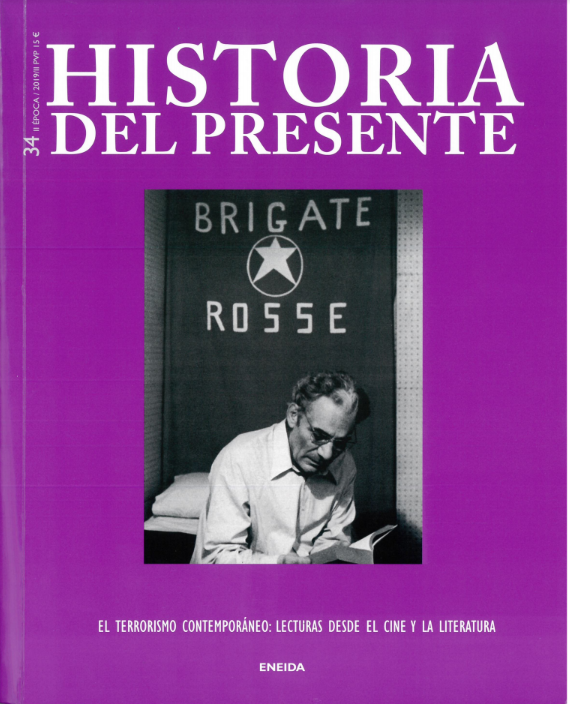Sorpresa, confusión y parálisis: Estados Unidos ante la revolución iraní
DOI:
https://doi.org/10.5944/hdp.34.2019.40391Resumen
Carter llegó a la Casa Blanca con el propósito de corregir el curso de la política iraní marcado por Nixon. La nueva administración buscaba priorizar la mejora de los derechos humanos en Irán así como la apertura de un proceso de liberalización a las vez que trataba de reducir las exportaciones de armas a Irán. Sin embargo, en un contexto de grave crisis económica, las reformas tardías del Sha no pudieron prevenir el inicio de un proceso revolucionario en el país. En 1978 Estados Unidos primero ignoró y malinterpretó el creciente descontento popular contra el Sha y luego fue incapaz de adoptar una política coherente y decidida para hacer frente a la crisis. Ante la negativa a apoyar una represión generalizada de las protestas por parte del ejército y ante la falta de un acuerdo con la oposición, Carter finalmente optó por apoyar una transición ordenada que dejase un ejército intacto que luego pudiese actuar de contrapoder al gobierno revolucionario.
Descargas
Citas
Ball, George W., The Past has another Pattern: Memoirs, Norton, Nueva York, 1982.
Bill, James A., The Eagle and the Lion: The Tragedy of American-Iranian Relations, Yale University Press, New Haven, 1988.
Blumenthal, W. Michael, From Exile to Washington: A Memoir of Leadership in the Twentieth Century, Over Look Press, Nueva York, 2013.
Brzezinski, Zbigniew, Power and Principle: Memoirs of the National Security Adviser, 1977-1981, Farrar, Straus, Giroux, Nueva...
Carter, Jimmy, Keeping Faith: Memoirs of a President, Bantam Books, 1982.
Carter, Jimmy, White House Diary, Farrar, Straus, Giroux, Nueva York, 2010.
Cooper, Andrew Scott, The Oil Kings, Simon & Schuster, Nueva York, 2011.
Ganji, Babak, Politics of Confrontation: The Foreign Policy of the USA and Revolutionary Iran, I.B. Tauris, Londres, 2006.
Harney, Desmond, The Priest and the King: An Eyewitness Account of the Iranian Revolution, I.B. Tauris, Londres, 1998.
Huyser, Robert E., Mission to Tehran, André Deutsch, Londres, 1986.
Jervis, Robert, Why Intelligence Fails: Lessons from the Iranian Revolution and the Iraq War, Cornell University Press, Ithaca,...
Milani, Abbas, The Shah, Palgrave Macmillan, Nueva York, 2011.
Newsom, David D., Witness to a Changing World, New Academia Publishing, Washington, 2008.
Pahlavi, Mohammad Reza, Answer to History, Stein and Day, Nueva York, 1980
Parsons, Anthony, The Pride and the Fall: Iran 1974-1979, Jonathan Cape, Londres, 1984.
Sick, Gary, All Fall Down: America’s Fateful Encounter with Iran, Penguin Books, Nueva York, 1986.
Stempel, John D., Inside the Iranian Revolution, Indiana University Press, Bloomington, 1981.
Sullivan, William H., Mission to Iran, Norton, Nueva York, 1981.
Takeyh, Ray, Guardians of the Revolution: Iran and the World in the Age of the Ayatollahs, Oxford University Press, Oxford, 2009.
Vance, Cyrus, Hard Choices: Critical Years in America’s Foreign Policy, Simon & Schuster, Nueva York, 1983.
Zabir, Sepehr, The Iranian Military in Revolution and War, Routledge, Nueva York, 2011.
Descargas
Publicado
Cómo citar
Número
Sección
Licencia

Esta obra está bajo una licencia internacional Creative Commons Atribución-NoComercial 4.0.
Esta obra está bajo una licencia internacional de uso: Atribución-NoComercial 4.0 Internacional https://creativecommons.org/licenses/by-nc/4.0/deed.es
Esta licencia permite a otros compartir el trabajo con un reconocimiento de la autoría del trabajo y de la publicación inicial en esta revista. Se pueden copiar, usar, difundir, transmitir y exponer públicamente, siempre que: i) se cite la autoría y la fuente original de su publicación (revista, editorial y URL de la obra); ii) no se usen para fines comerciales.








